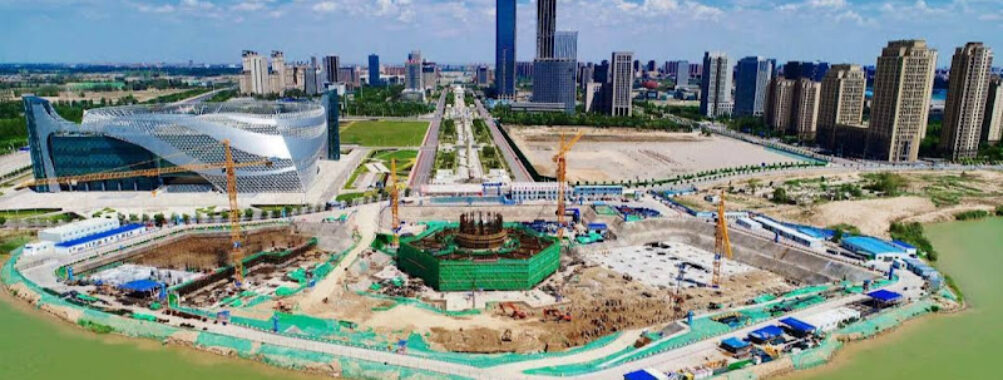
Yinchuan
“`html
Table of Contents
Description
Yinchuan, the capital of the Ningxia Hui Autonomous Region in northwest China, is one of those places that quietly sneaks up on you. At first glance, it might seem like just another mid-sized Chinese city, but spend a few days wandering its streets and exploring its edges, and you’ll realize it’s got layers — history, faith, and desert landscapes all rolled into one. Once the imperial capital of the Tangut-led Western Xia dynasty, Yinchuan still carries whispers of its ancient glory. The city’s mix of Islamic culture, Chinese traditions, and frontier resilience gives it a character that’s hard to pin down but easy to fall for.
I remember my first morning there — the air was dry but crisp, and the Helan Mountains loomed in the distance like a faded watercolor painting. The locals were friendly, curious even. A shopkeeper insisted I try a cup of sweet milk tea, and before I knew it, we were chatting about the Western Xia kings as if we were old friends. That’s the thing about Yinchuan — it’s not just about sightseeing; it’s about connecting with a rhythm of life that feels slower, more grounded.
The old and new coexist here in a way that feels natural. You can walk through the ruins of the Western Xia Imperial Tombs in the morning and then sip coffee in a sleek riverside café by afternoon. The city’s skyline isn’t flashy, but it’s framed beautifully by the Helan Mountains to the west and the Yellow River to the east. And if you’re the kind of traveler who enjoys places that haven’t been polished to perfection, Yinchuan will charm you with its authenticity.
Key Features
- Western Xia Imperial Tombs: Often called the “Pyramids of China,” these ancient burial sites are hauntingly beautiful and tell stories of a forgotten empire.
- Helan Mountains: A paradise for hikers and photographers, with prehistoric rock carvings and sweeping desert views.
- Sand Lake: A blend of desert and wetland — you can ride camels and watch migratory birds in the same afternoon.
- Nanguan Mosque: One of China’s oldest and most significant mosques, reflecting the deep Islamic heritage of Ningxia’s Hui people.
- Shuidonggou Site: An archaeological treasure trove that offers a peek into prehistoric human life in northern China.
- Yinchuan International Film Festival: A growing cultural event that’s putting the city on the global creative map.
- Local Cuisine: From hand-pulled noodles to lamb skewers and Hui-style dumplings, the food here is hearty, flavorful, and surprisingly diverse.
Best Time to Visit
If you ask me, autumn is the sweet spot. From September to early November, the weather is pleasantly cool, the sky turns a shade of blue you don’t often see in big cities, and the Helan Mountains glow golden at sunset. Spring can also be lovely — think blooming apricot trees and mild breezes — but it’s a bit unpredictable. Summers are hot and dry, the kind of heat that makes you crave cold watermelon and long naps in the shade. Winters, on the other hand, are crisp and quiet; the city slows down, and you’ll find fewer tourists, which can be a blessing if you like having places to yourself.
I once visited in mid-October and still remember standing by the Yellow River, watching the reflection of the mountains ripple across the water. It wasn’t crowded, just peaceful. That’s Yinchuan’s charm — it gives you space to breathe.
How to Get There
Getting to Yinchuan is easier than you might think. The city’s main gateway is Yinchuan Hedong International Airport, which connects to major Chinese cities like Beijing, Shanghai, and Xi’an, as well as some international destinations. If you’re already in northern China, high-speed trains make the journey smooth and scenic. The train ride from Xi’an, for example, takes about four hours, and the landscapes along the way — rolling hills, desert plains, and distant mountain silhouettes — are worth staying awake for.
Within the city, taxis and ride-hailing apps are convenient, but I’d recommend renting a car or hiring a driver if you plan to explore beyond the city center. Many of Yinchuan’s best sights, like the Western Xia Tombs and the Helan Mountains, are spread out. Plus, driving through the open desert roads with the mountains in view is an experience in itself.
Tips for Visiting
First things first — bring layers. The desert climate means big temperature swings between day and night. I learned that the hard way when I underestimated how chilly evenings could get. Also, sunscreen is your friend; the sun here doesn’t mess around.
If you’re planning to visit the Western Xia Tombs or the Helan Mountains, go early in the day. The light is softer, the crowds thinner, and the air feels fresher. And don’t rush — Yinchuan rewards slow travelers. Take time to chat with locals, sample street snacks, and maybe even join a tea ceremony at one of the Hui community teahouses.
A small but important note — respect local customs. Ningxia is home to a large Hui Muslim population, so dress modestly when visiting mosques or traditional neighborhoods. Avoid bringing pork products, and be mindful during prayer times. The locals are incredibly welcoming, and showing cultural respect goes a long way.
Lastly, keep an open mind. Yinchuan isn’t flashy like Shanghai or ancient like Xi’an, but it’s got a quiet confidence. It’s a city that tells its story slowly, through its landscapes, its people, and its food. And if you let it, it’ll leave a lasting impression — one that lingers long after you’ve gone home.
So, pack your curiosity, maybe a light jacket, and a good camera. Yinchuan is waiting, and it’s worth every moment you spend discovering it.
“`
Location
Places to Stay Near Yinchuan
Find and Book a Tour
Explore More Travel Guides
No reviews found! Be the first to review!